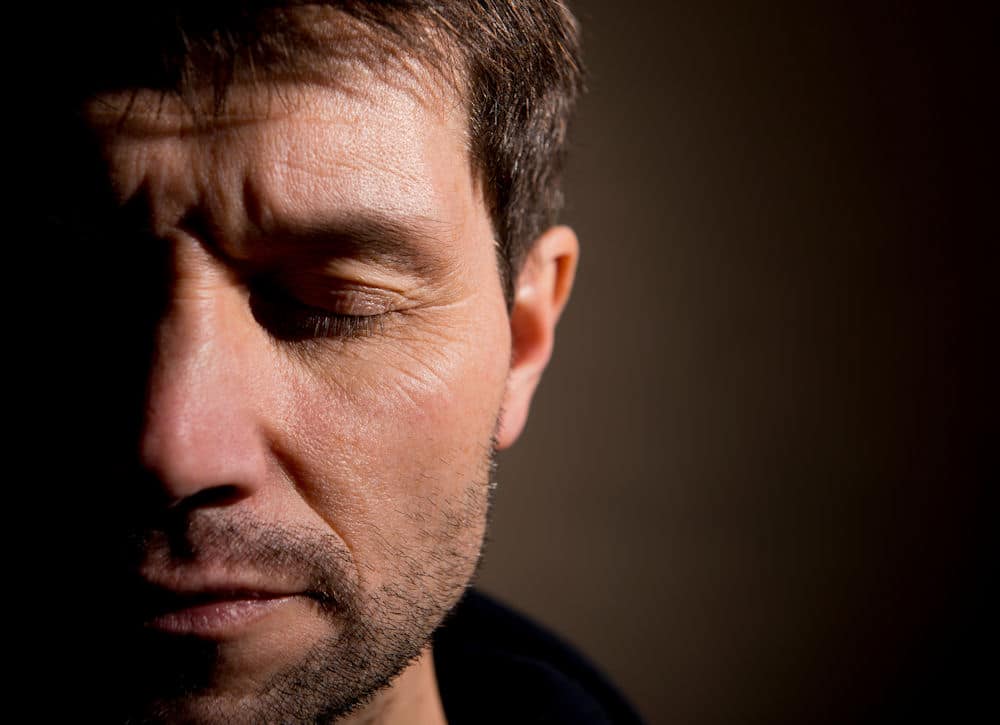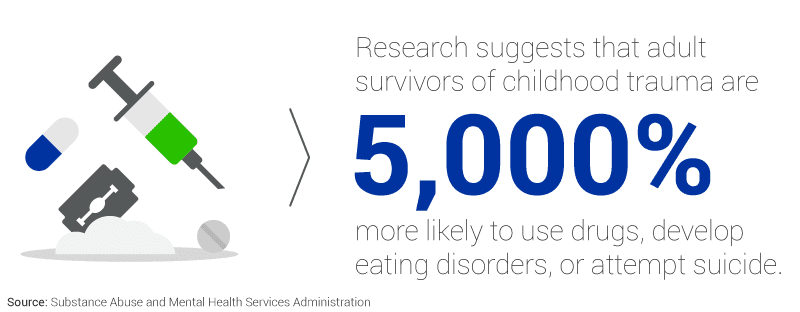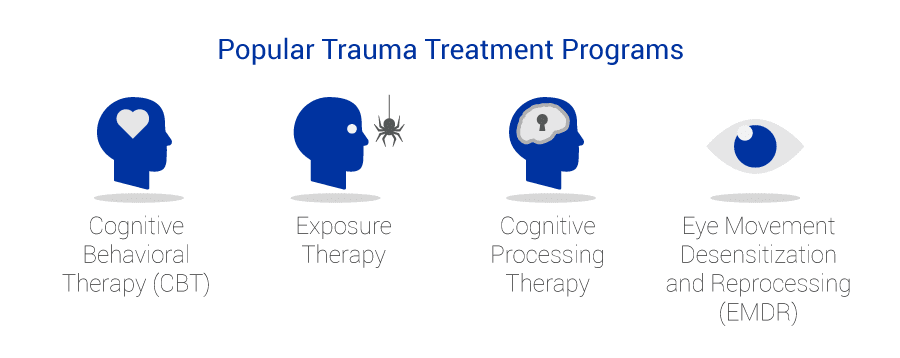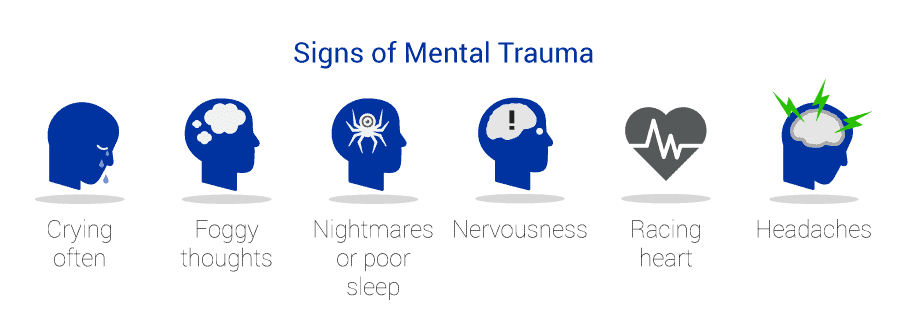Find Comprehensive Treatment Options in West Palm Beach, FL at Ambrosia
Embarking on a trauma recovery journey means reaching out for expert guidance, acknowledging your symptoms, and embracing the healing power of support from those who care about you. If you are suffering from both trauma and addiction, your recovery journey is even more complex due to the presence of substance abuse.
Unfortunately, trauma can leave behind real scars. Some of those wounds you can see with your eyes, but others you feel deep in your heart. While drugs and alcohol may temporarily relieve some of the symptoms in the short term, in the long term these symptoms become much worse. Research can help you both understand your past and your path forward. This article can help. We’ll cover:
- The formal definition of trauma
- Psychological trauma
- Childhood trauma
- Physical trauma
- Addiction’s link to trauma
- Treatment options
- Prevention techniques
- Official responses
If you’ve experienced trauma, you’re not alone. If you’re not sure how to deal with the pain, you’re also in good company. At Ambrosia, we can help you overcome traumatic events and experiences without drug or alcohol abuse.
What Is Trauma?

Put plainly, trauma is a response. Something horrible happens, and your brain and body react to that traumatic event or experience. This is what causes the mental health disorder to develop.
Events that spark trauma are common. An estimated 70 percent of American adults have lived through at least one traumatic event at some point in their life. But it’s the response to those events that matter.
Trauma is also subjective. Two people could go through the very same thing, and one could be traumatized, while the other emerges unscathed. Your history, your current mental state, your outlook, and your personality all play a role in helping you to process something disturbing. When those factors combine in the right way, damage can take hold.
We often think of a trauma trigger as something severe, like a rape or an attempted assault. But even small, subtle things can have a huge impact. A fender bender, a fierce verbal argument, or a mild dog bite could be enough to cause a traumatic experience.
Resilience can also vary from person to person. While some can bounce back from trauma relatively quickly even without any help, others struggle for months or even years after the event. That’s rare, as research suggests that less than 2 percent of people who live through trauma develop classic post-traumatic stress disorder (PTSD), which involves persistent stress. But it can happen.
The risk of harm and your recovery rate can also vary depending on the type of traumatic experiences you endure.
Psychological Trauma: An Injury to Your Core
- Kidnapping
- Wartime combat
- Terrorist attacks
- Armed robbery
Research suggests that psychological trauma is more likely if the event is:
- Caused by a person (not nature)
- Ongoing (rather than a one-time issue)
- Unpredictable (rather than scheduled)
- Deliberate (rather than accidental or impulsive)
- Inflicted on a child as adverse childhood experiences
- Initiated by an adult or a caregiver
While traumatic events are unfolding, the mind is overwhelmed with sensation and emotion. Brain cells can’t store memory properly. That can make you feel as though you’re still trapped in that terrifying moment, even if it’s weeks or months later.
Some people with psychological trauma endure a form of disassociation. Their brain cells are still processing the event, and it hasn’t been pushed into memory. As a result, they may deny that anything bad happened. They simply cannot remember the details due to the damage the trauma caused.
This is especially common in people who endure the next type of trauma we’re about to discuss.
Childhood Trauma: An Injury to Your Innocence
When we think of childhood abuse, we often think of sexual assault. An estimated 42 million adults are survivors of such crimes. In most cases, they’re perpetrated by someone the child knows, trusts, and loves. The damage caused by sexual abuse is significant.
But children can also endure a different, but just as damaging, type of abuse. Of the 7.5 million children who live through child abuse, 74.9 percent are neglected, according to the American Society for the Positive Care of Children. That means these children may have no food, no medical care, and no housing support. They are raising themselves, and that type of childhood trauma can be very damaging.
Child abuse causes trauma that lingers. Research suggests that adult survivors of childhood trauma are 5,000 percent more likely to use drugs, develop eating disorders, or attempt suicide.
Children can’t outgrow some memories. They stick, and when they do, these children become adults who may take drastic steps to make themselves overcome the memories of physical or sexual abuse— sometimes with catastrophic consequences.
Physical Trauma: An Injury to Your Body
- Concussions or other head injuries
- Deep cuts
- Broken bones
- Penetrating wounds
But when survivors talk about physical trauma, they might mention:
- Nightmares: They may relive the same event every night.
- Avoidance: They may steer clear of places that remind them of the event.
- Loneliness: They may be unable to describe their concerns to others even though they want to.
- Anger: They may think about life before the traumatic events and feel dismayed that they’re not as healthy as they once were.
Doctors may treat physical trauma with surgeries, wound cleaning, medications, and nutrition. However, the emotional impact of that injury can be untouched even though it causes extreme distress. While their bodies have healed, their minds have not.
Rape survivors know emotional trauma can persist. In a study, researchers found that rape survivors have a higher risk of:
- Depression or persistent sadness
- Anxiety or general disease
- Poor sleep
Trauma vs PTSD: Understanding the Difference
Trauma:
- Definition: Trauma refers to an emotional response to a distressing or disturbing event such as accidents, natural disasters, violence, or any other situation that causes intense fear, helplessness, or horror.
- Duration: The emotional and psychological effects of trauma can be short-term or long-lasting, but not everyone who experiences trauma will develop PTSD.
- Symptoms: Common symptoms include shock, denial, sadness, anxiety, agitation, numbness, and difficulty concentrating. These symptoms may dissipate over time with appropriate support and coping mechanisms.
- Occurrence: Trauma is a one-time, multiple, or long-lasting repetitive event that impacts an individual.
PTSD (Post-Traumatic Stress Disorder):
- Definition: Post-Traumatic Stress Disorder is a specific mental health condition that can develop after exposure to traumatic events. It is characterized by persistent mental and emotional stress.
- Duration: PTSD symptoms are long-lasting and typically persist for more than a month. They interfere significantly with daily life and function.
- Symptoms: Include re-experiencing the trauma through flashbacks or nightmares, avoidance of situations that remind the person of the event, negative changes in thoughts and mood, and hyperarousal (being easily startled, and feeling tense). These symptoms must meet specific diagnostic criteria outlined in the DSM-5 (Diagnostic and Statistical Manual of Mental Disorders).
- Occurrence: Not everyone who has a traumatic experience will develop PTSD. Risk factors include the severity of the trauma, personal history, and available support systems.
Similarities Between Trauma and PTSD

- Origin: Both trauma and PTSD originate from exposure to distressing events.
- Impact: Both can significantly impact a person’s emotional and psychological well-being.
- Symptoms Overlap: Some symptoms like anxiety, sadness, and difficulty concentrating can be present in both conditions.
- Need for Support: Both conditions benefit from professional support, therapy, and sometimes medication to manage symptoms and improve quality of life.
- Influence on Behavior: Both can lead to changes in behavior and social interactions, including withdrawal, irritability, and changes in sleeping patterns.
Trauma can sometimes lead to PTSD when the emotional and psychological impact of the distressing event overwhelms an individual’s ability to cope, resulting in persistent mental and emotional stress. Each person’s experience with trauma is unique due to varying factors such as personal history, severity of the event, and available support systems.
Consequently, it is crucial to recognize that treatment approaches must be tailored to reflect these individual differences, ensuring that the support provided meets the specific needs and circumstances of each person. This personalized approach fosters more effective healing and recovery.
How Does Trauma and PTSD Affect Men and Women Differently?

The types of trauma experienced also vary between genders, women are more likely to have experienced trauma from sexual assault, childhood sexual abuse, and domestic violence, with approximately one in three women having experienced physical or sexual violence by someone they were intimate with. In contrast, men are more often exposed to trauma related to accidents, physical assaults, combat, or witnessing death or injury.
The response to PTSD symptoms differs as well. Women typically report higher levels of anxiety, depression, and avoidance behaviors and are more likely to internalize their symptoms, leading to increased incidences of mood and anxiety disorders. Men, on the other hand, are more prone to externalizing behaviors such as anger, irritability, and aggression and might turn to substance use as a coping mechanism more frequently than women. Comorbidity patterns also show differences; women with PTSD often have comorbid conditions like depression and anxiety disorders, while men with PTSD are more likely to have comorbid substance use disorders.
Help-seeking behavior highlights another difference, women are generally more likely to seek mental health treatment after experiencing trauma compared to men. Men, though, are less inclined to seek help due to social stigmas around masculinity and mental health, which can often lead to untreated PTSD and its associated complications.
The impact of PTSD on life and relationships also diverges between genders. For women, PTSD often affects parenting and can increase the risk of their children developing emotional and behavioral issues. In men, PTSD can affect work performance and elevate the risk of relationship conflicts and domestic violence.
The Link Between Trauma and Addiction
In every type of trauma we’ve discussed, we’ve mentioned that healing can be difficult. We’ve also said that people often don’t know what to do to make the pain go away. Unfortunately, many people who live with trauma choose to self-medicate with alcohol or drugs.
Experts point out that trauma causes a lack of emotional regulation. You feel stressed when you should be relaxed, or you seem tearful for no reason at all. Substance abuse gives the perception of control. When you feel low, you can take something to lift you. When you feel anxious, you can take something to slow you down.
How Substance Abuse Exercerbates Mental Health Disorders
Unfortunately, substance use also alters brain chemistry and causes changes in the brain structure in lasting ways, and those changes make emotional control even more elusive. Additionally, substance use can cause mental illness symptoms to become more intense and harder to control. You may be unable to feel joy without drugs, and you may feel muted almost all the time. You may also cause additional anxiety, stress, and fear as an added consequence of substance abuse. This causes a decline in overall well-being.
Many people know that substance abuse doesn’t help to heal trauma. And yet, it’s common for people to try self-medication.
For example, researchers suggest that adult survivors of childhood abuse are 1.5 times more likely to self-medicate with illicit drugs when compared to adults without that history.
There is a better — and proven — way to move past trauma. It involves therapy and making lifestyle changes. These can help you overcome traumatic memories and the mental health problems associated with trauma and PTSD symptoms.
Trauma-Informed Care Will Help You Overcome Your Challenges
Your trauma and addiction treatment program might include one or several types of therapy, such as:
- Cognitive behavioral therapy (CBT): You identify the situations and feelings that remind you of your trauma, and you work with your therapist on skills to help you plan for and cope with these events, so you can deal with them effectively.
- Exposure therapy: You’re reintroduced to a thing or a situation that reminds you of your trauma, and you gain control of the thoughts and feelings attached to the memory.
- Cognitive processing therapy: This treatment is often used for survivors of sexual trauma. You work with a therapist to change the way you think about what happened, so your stress symptoms can fade.
- Eye movement desensitization and reprocessing (neuroscience): EMDR therapy involves discussing your trauma while you focus on a moving light, a shifting noise, or a hand tap. Researchers suggest that your eye movements in combination with your speech help to reduce trauma symptoms.
Your doctor may also use medications to help you sleep better, feel less depressed, or endure less anxiety. Not all doctors use prescriptions, but some feel they’re helpful.
Trauma recovery can be lengthy. Experts say that some people recover within about six months of the event, but some people need even longer to heal fully.
Various types of treatment programs offer these specialized therapies to address trauma and addiction. These programs can be categorized into residential and outpatient settings, each with its unique approach and benefits.
Inpatient rehab centers provide a structured and immersive environment where individuals live at the facility for a certain period, usually ranging from 30 to 90 days. These facilities can also provide longer-term care for individuals with severe mental health issues, including trauma and addiction. They offer intensive therapy sessions and continuous medical support.
IOPs offer a flexible treatment option where individuals attend therapy sessions several times a week while maintaining their daily routines. These programs are suitable for individuals with a stable living environment and a lower risk of relapse.
PHPs provide a higher level of care than standard outpatient programs but allow individuals to return home each day. Patients typically attend therapy sessions for several hours a day, five to seven days a week.
These programs involve fewer therapy sessions per week and are suitable for individuals who have completed higher levels of care or those with milder symptoms.
Treatment is effective, but there are some people with symptoms that persist despite treatment. For example, researchers found that two-thirds of veterans who complete therapy retain their trauma symptoms.
Don’t get discouraged. While the event may have been over quickly, your brain and body might need time to work through the damage. Your treatment plan may change a few times until you find a combination that’s right for you. Your doctor can help you move forward.
Can Prevention Help?
The key, they say, is to talk about what happened in detail with someone who can help you learn to cope. When you have new skills at your disposal, you won’t be tempted to lean on solutions like alcohol that simply don’t work.
While it’s common for people to feel a little sad or jumpy after a traumatic event, serious symptoms deserve a strong response. Signs of danger include:
- Crying often
- Foggy thoughts
- Nightmares or poor sleep
- Nervousness
- Racing heart
- Headaches
- Your risk of developing these issues is higher, experts say, if you:
- Have a pre-existing mental health issue
- Have experienced another form of trauma in the past
- Are under stress
- Have few close friends or family members to count on
If you recognize someone you love or yourself on these lists, it’s vital to get help quickly.
Officials Are Fighting Too
 When it comes to preventing and treating trauma, you’re not in this battle alone. Experts are also looking for ways to help.
When it comes to preventing and treating trauma, you’re not in this battle alone. Experts are also looking for ways to help.
Consider the U.S. Department of Veterans Affairs. Officials there know that wartime experiences can lead to trauma symptoms. They also know that it’s hard for some soldiers to get better even if they’re discharged for their distress.
That’s why the VA is conducting a great deal of research on trauma-informed therapies. That work is well funded. In 2013, for example, $100 million was set aside to support research on trauma therapy and brain injury.
Research done in the military can trickle out to civilians, and it can help doctors understand what solutions work and what should be skipped.
Meanwhile, law enforcement agencies are looking for ways to reduce the amount of violent crime that can result in trauma. Those efforts are paying off.
The rate of violent crime in the United States fell 49 percent between 1993 and 2017. That means fewer rapes, murders, and abductions. If that work continues, trauma rates should also fall.
Recovery is Always Personal At Ambrosia
You’ll need the help of your friends, your family, and a therapist to get there. With this team effort, you will improve in time.

Dr. Alam is an internationally renowned psychiatrist with academic affiliations with Northwestern University and University of Illinois, Chicago where he completed his residency training. He has been a principal investigator for over forty studies and has been involved in research leading to the approval of most psychiatric medications currently on the market. He is the founder of the Neuroscience Research Institute which continues to conduct research on cutting edge medication and interventional psychiatry. Dr. Alam is a Distinguished Fellow of the American Psychiatric Association and the American Society of Addiction Medicine. He has won several awards and has been featured extensively on radio and television.


















